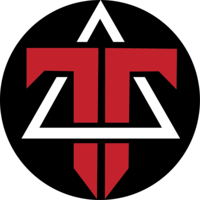Bởi vì sự mở rộng của nuôi trồng thủy sản và sự giới hạn của nguồn tài nguyên sẳn có từ biển, đây là một nghiên cứu cần thiết để tìm ra sản phẩm thay thế cho bột cá sử dụng trong nuôi trồng thủy sản.
Chúng tôi tin rằng việc sử dụng bột côn trùng thay thế nguồn protein động vật có thể là một chọn lựa. Để sử dụng bột côn trùng cho mục đích nghiên cứu này, thì cần phải xác định đặc điểm dinh dưỡng của các loại côn trùng. Để xác định tiềm năng của như nguồn bột thay thế cho bột cá trong thức ăn của cá được sử dụng trong nuôi trồng thủy sản, chúng tôi đã kiểm tra 16 loài khác nhau, gồm 5 nhóm giai đoạn phát triển khá nhau của các bộ Coleoptera (4), Diptera (7) và Orthoptera (5).
Côn trùng được phân tích cho thấy có hàm lượng acid béo cao hơn bột cá nhưng hàm lượng protein thì thấp hơn. Với các trường hợp ngoại lệ của Histidine, threonine và lysine, thì phân tích côn trùng cho thấy acid amin gần giống bột cá, với bộ Diptera b là nhóm hầu hết có acid amine giống với bột cá. Tuy nhiên hàm lượng acid béo của côn trùng rất khác nhau so với bột cá là giàu n-3, đặc biệt 14% EPA, 16% DHA, thực tế thì không có ở côn trùng. Trong côn trùng có tỷ lệ omega 6 và các acid béo không bão hòa đơn cao hơn bột cá.
The potential of various insect species for use as food for fish
Due to the expansion of aquaculture and the limited resources available from the sea, it is necessary to find substitutes for fish meal for use in aquaculture. We believe that the use of insect meals as an alternative source of animal protein may be an option. To use insects for this purpose, it is necessary to determine the nutritive characteristics of these insects. To determinate the potential of insects as a substitute for fish meal in fish food used in aquaculture, we examined 16 different species, 5 of them as different stage of development, of the orders Coleoptera (4), Diptera (7) and Orthoptera (5). The insect analysed have a higher proportion of fat and less protein than fish meal. With the exceptions of histidine, threonine and lysine, the insects present an amino acid profile similar to fish meal, with Diptera b being the most similar group to fish meal. However, the fatty acid content of insects is very different from that of fish meal which is rich in n-3, especially 14% EPA, 16% DHA, practically absent in insects. The insects have higher ratios of omega 6 and monounsaturated fat.
Phó Văn Nghị, trieutuan.blog
Source: Barroso F. G., C. D. Haro, M. J. S. Muros, E. Vvenegas, A. M. Sanchez and C. PP. banon, 2014. The potentail of various insect species for use as food for fish. Aquaculture. Volume 422-423, pp. 193-201.
